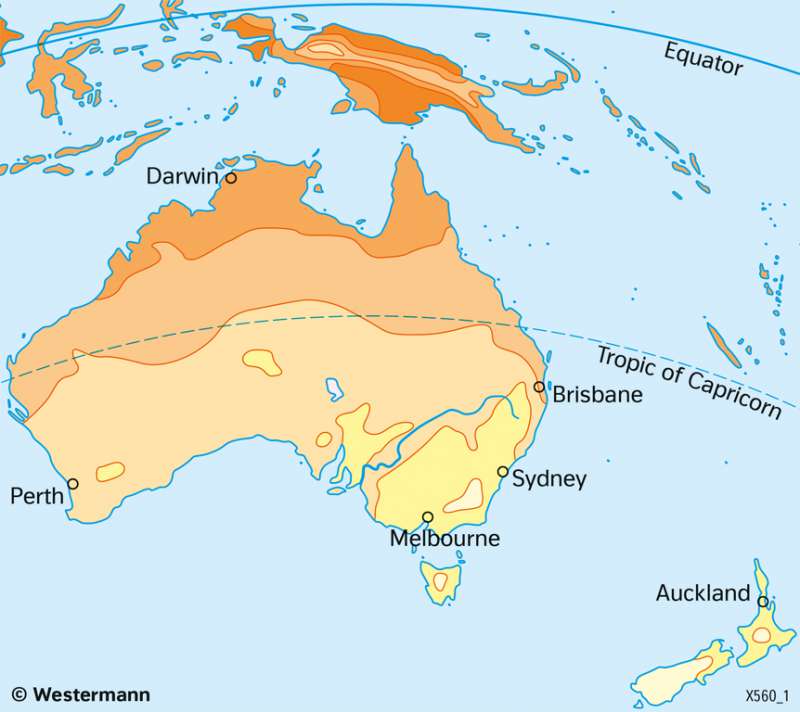Australia and New Zealand - Temperatures in July
Economy and land use
978-3-14-100890-6 | Page 164 | Ill. 4

Overview
Large parts of Australia lie in the tropics and subtropics. The border between the two zones runs near the Tropic of Cancer. The climate in large parts of the continent is shaped by the influence of the southern hemispheric high pressure belt. In combination with windward-leeward effects and altitude, this creates a wide range of climatic conditions with dry and ever-humid tropics and dry, summer-humid, and winter-humid subtropics.
Temperature conditions
The temperature distribution in Australia shows a clear dependence on latitude, degree of continentality and altitude. In January, during the austral summer, the highest average temperatures occur in the interior of Australia (sometimes over 30 °C). The land masses, when they lie under the subtropical high pressure belt, heat up much more than the surrounding water areas. Towards the south, the temperature decreases with increasing latitude. In the east and southeast, the cooler altitudes of the Australian Highlands also stand out. Temperatures there in January average only 10 °C to 15 °C in some places.
In July, during the southern winter, average temperatures in south-eastern Australia sometimes fall below 5 °C. The continental influence of Inner Australia, however, is less noticeable at this time of year.
The temperature conditions in Tasmania and New Zealand are comparable to those in Western and Central Europe, except for the "reversal of the seasons" in the southern hemisphere.




